Published a piece of content online? Well, chances are GPTBot has crawled already.
Developed by Open AI, it is an automated crawler bot that crawls the web to collect the data from the internet which is available in public domain. It collects the data to assist in fine tuning its large language models (LLMs) and to train.
This activity is key in establishing the access to collecting the information which helps the AI systems generate correct and relevant responses.
But should you accept GPTBot or block it?
Let’s check it out.
What is a GPTBot?
Automatically crawling the web to gather the publicly available data from the internet is done by the GPTBot. This bot offers benefits like elevating the accuracy and applicability of AI content. This allows more influential natural language processing capabilities while helping in designing more intricate AI apps. When you upgrade it helps keep AI models in touch with the latest trends and information.
Why does GPTBot Crawl Sites?
To enhance the training datasets for AI models, it crawls websites to gather publicly available data. By ensuring that AI systems have access to a variety of data, this activity improves their capacity to produce precise and contextually appropriate responses. It helps create increasingly complex AI models that can comprehend and process intricate queries by collecting a variety of data.
How does GPTBot Work?
Similar to a search engine bot, GPTBot navigates through links, it also goes through text on webpages and saves data for analysis. It also looks for public file that tells the bots to exclude the parts of the site that are not allowed to access. If file prohibits GPTBot then the bot assumes to pay no attention to the site.
After the bot collects the data, its aftermath has a significant impact. It collects the information to supply Open AI’s large language models. On the contrary, Googlebot indexes the content to make it searchable on Google. It accumulates texts written by humans from the internet to help the AI models like GPT-4 and GPT-5 learn. They make recommendations, can write code and create responses that resemble the responses a human would have given using the texts that have been collected.
But Should You Block GPTBot?
Many website owners are pulling the brakes despite the possible advantages of permitting GPTBot. Millions of robots.txt files on more than 3% of all websites specifically forbid GPTBot. The New York Times, CNN, Reuters, and other prominent publishers are among the major players that have already prevented GPTBot from accessing their content.
But why would they do that when there are advantages to it?
Well, we have mentioned some of the reasons below.
Thankless & Rewardless Job – Just like when I wrote this piece of content, it takes time and effort to create high-quality content. If AI uses their work to answer queries without even providing a credit link or acknowledgment, many publishers believe it’s a raw deal. In contrast to Google Search, which can drive thousands of people to a website for a well-known article, ChatGPT may provide users with the article’s content without them ever having to visit the original source. Owners of websites are concerned that this might eventually devalue original content and steal traffic.
Loss of Power & Context – You lose some control over how your content is presented when an AI learns from it. Bits of information from various sources may be mixed and matched by large language models, which could change the meaning or context. The AI may misrephrase something you wrote or mix it with other information in a way that alters its meaning, and you won’t really be able to fix it. Site owners who have carefully crafted messaging or who are afraid of misrepresentation are concerned about this.
Legality – Questions like “Is it legal for an AI to memorize my blog post?” have not been addressed by the law. These scenarios test data protection and copyright laws. Regarding whether using publicly available web content for AI training constitutes fair use or copyright infringement, there is currently no established precedent. Legal teams are anxious because of this uncertainty.
Ethics – Beyond the pragmatic issues, some website owners and internet users are concerned about the quick development of artificial intelligence. They consider blocking GPTBot to be a principled or protesting act. These issues can cause hesitance in supporting the progress of AI. Bear in mind that completely overlooking AI also has its own risks. Gen AI has become a widely accepted method of search and retrieve and websites which are choosing to overlook it completely have got the issue of becoming less relevant and harder to find.
So, What Does it Conclude?
Question now arise, should you allow GPTBot to easily crawl your website or just block it? Well, it depends. There’s no one solution that fits all. It depends upon things like your priorities, business plan, and how much you want to supply to the advancement of the AI in this changing landscape.
If you’d like to block it then it is also a wise decision if your priorities are data privacy, legality of the risks and content proprietorship.
However, encouraging this bot to crawl might be a better option if your priorities are visibility, reach and relevancy. Your brand’s authority and visibility in new discovery channels, even ones that don’t resemble conventional search engines, could be increased by allowing your content to influence the next generation of AI tools like ChatGPT.
To help you with the decision-making –
Block GPTBot if control and carefulness are of importance to you.
Keep GPTBot if you want to have an impact and be a part of the future.
To learn more about the latest tech, visit HiTechNectar!
Also Read:
5 Pros and Cons of Chatbots
AI and Chatbots changing the Face of Digital Marketing


